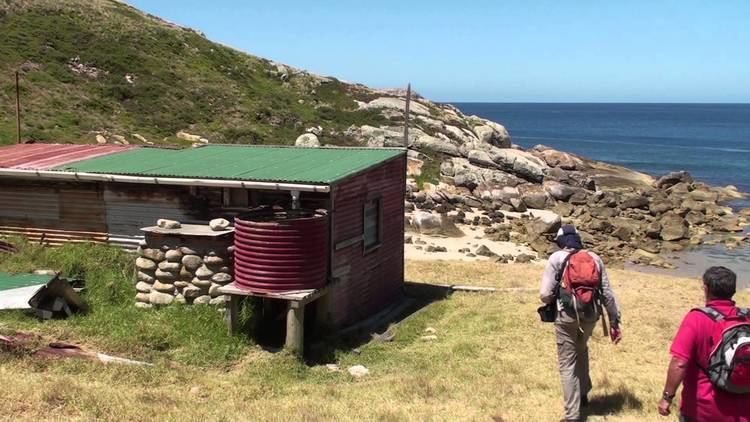Area 232 ha (570 acres) | Highest elevation 116 m (381 ft) Elevation 116 m | |
 | ||
The Hogan Island, the largest island of the Hogan Group, is a 232-hectare (570-acre) granite island, located in northern Bass Strait, that lies between the Furneaux Group in north-west Tasmania, and the Wilsons Promontory in Victoria, Australia. The island has a maximum elevation of 116 metres (381 ft) .
Contents
Map of Hogan Island, Tasmania, Australia
Features
Together with the other islands in the Hogan, Kent and Furneaux groups, the Hogan Island formed part of a land bridge that connected Tasmania to mainland Australia up until the end of the Pleistocene period. After the glacial period ended, the Hogan Group were the first islands to become isolated by rising sea levels.
The Hogan Group was discovered by Europeans and named in 1801 by John Black, captain of the Harbinger who named the island group after Michael Hogan, the owner of his ship. There are records of settlers on the island group, who hunted seals and kangaroos and used the islands for grazing land. On 12 October 1900, the first lease was recorded and given for Hogan Island. While the original lease covered the entire island group, since 1959 the lease has only applied to Hogan Island, which has been leased by B. R. Stackhouse since 1967, who uses the island for sheep and cattle grazing.
The island was formerly used for the grazing of cattle, an activity which has ceased after causing considerable damage to the vegetation and the natural springs there.
Fauna
Recorded breeding seabird and wader species include little penguin, short-tailed shearwater also known as the muttonbird, Pacific gull, silver gull and sooty oystercatcher. Reptiles present are the eastern blue-tongued lizard, metallic skink, three-lined skink, Bougainville's skink and White's skink. Goats were present for some time also.
State border
The state border between Tasmania and Victoria lies in the Hogan Group and passes over land on the North East Islet, thus giving a land border between the two states. Before Victoria became a colony, it was agreed that New South Wales would have sovereignty of all the land to Bass Strait, and Tasmania would have Bass Strait, except for waters near the coast. The original intention was that these Bass Strait Islands would be part of Tasmania, but the surveyed position for Wilson's Promontory was slightly off, and the border placed too far south at 39°12' S. Once this was discovered the Islet was renamed to Boundary Islet. The land border is 85 metres (279 ft) long.
